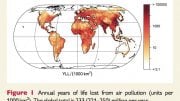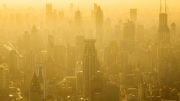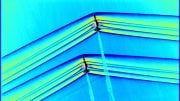
NASA’s DC-8 aircraft flies low over urban places to collect data on air quality. Credit: NASA
The AEROMMA project, a collaboration between NOAA and NASA, is studying anthropogenic pollution in North American cities by flying NASA’s DC-8 aircraft over these areas in summer 2023. Instead of car emissions, the study focuses on emissions from everyday products like personal care and cleaning items. The project aims to measure emission flux over cities by combining various observation systems and models, and by collaborating with other air quality studies.
Shifting Focus in Air Pollution Research
Although traditionally, research on air quality and pollution has centered primarily on emissions from transportation, particularly cars, urban areas now tend to experience less pollution from motor vehicles than in the past. In response, scientists heading the AEROMMA project this summer are turning their attention towards other anthropogenic, or human-driven, sources of pollution.
Introducing the AEROMMA Project
The AEROMMA project, which stands for Atmospheric Emissions and Reactions Observed from Megacities to Marine Areas, is a joint initiative by the National Oceanic and Atmospheric Administration (NOAA) and NASA. From late June through mid-August 2023, the researchers will employ NASA’s DC-8 aircraft, the world’s largest flying science laboratory, to conduct low-altitude flights over several cities and gather data on pollution sources. This aircraft is operated by NASA’s Armstrong Flight Research Center.
Project Aims and Methodology
The project aims to scrutinize the air quality over some of North America’s most densely populated areas, including Los Angeles, Chicago, New York, and Toronto. By using the DC-8 to execute a series of low-altitude flights, the team will explore urban emissions and the atmospheric chemical reactions that influence air quality and climate. These emissions sources encompass everyday items such as personal care products, cleaning agents, smaller gas-burning devices, and even landfills.
Everyday Products as Pollution Sources
Unlike transportation-related pollution, pollution from everyday products remains proportionate to the population, since these items are universally used. Whether it’s a window cleaning agent or a dry shampoo for rushed mornings, the products we frequently use are designed to emit vapors into the atmosphere, either to disseminate scent or facilitate coatings drying. These volatile ingredients are often fossil fuel derivatives and consequently impact our collective air quality, with the effect being particularly tangible and measurable in major cities.
Collaboration and Student Involvement
The AEROMMA project integrates airborne, ground, and satellite observation systems, and leverages cutting-edge air quality and climate models to quantify the flux of anthropogenic emissions over North American cities. The project’s low-altitude flights will be coordinated with high-altitude flights from aircraft operated by NASA’s Langley Research Center as part of STAQS, the Synergistic Tempo Air Quality Science project. In conjunction with other partners engaged in parallel air quality studies — AEROMMA, STAQS, CUPiDS, GOTHAAM — the team aims to create a synergistic observation system that is more comprehensive than any single mission could achieve on its own.
NASA’s aircraft personnel will oversee the project’s safety, while NOAA scientists will spearhead the scientific investigations. Furthermore, both NASA and NOAA teams will mentor undergraduate students from NASA’s Student Airborne Research Program (SARP), as they contribute to research during the Los Angeles flights.









I remember that many years ago (I think the 60’s) the people were worried about lead in the air so they started measuring it in the school play grounds. But they measured it 20 feet in the air, and not at ground level where the children were playing. You can hide the problem if you want to.